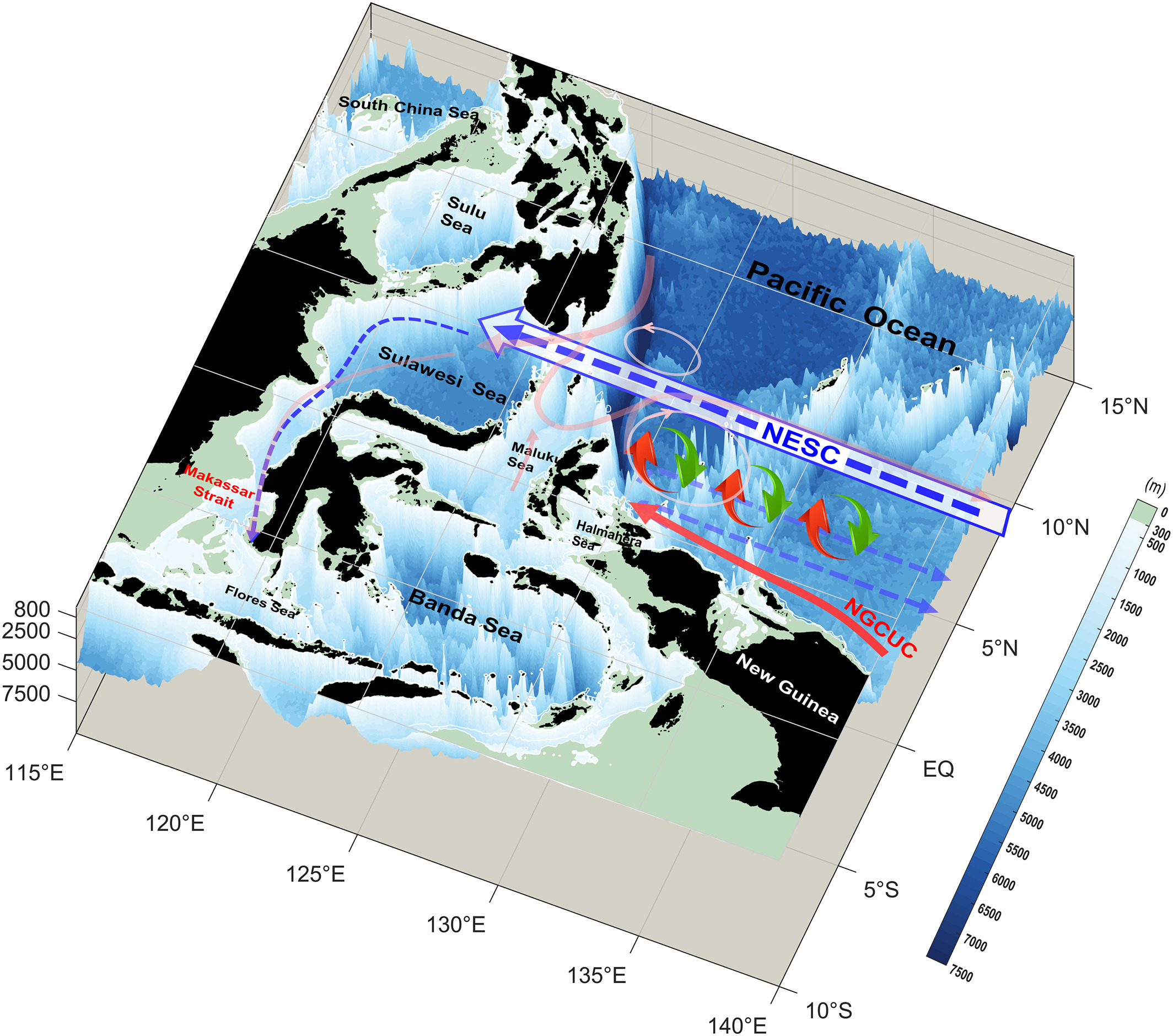A Strong Sub-Thermocline Intrusion of the North Equatorial Subsurface Current Into the Makassar Strait in 2016–2017
Mingting Li, Dongliang Yuan, Arnold L. Gordon, Laura K. Gruenburg, Xiang Li, Rui Li, Xueli Yin, Ya Yang, Corry Corvianatie, Jun Wei, Song Yang
Published in Geophysical Research Letters, APR 2021
The poorly resolved pathway of the sub-thermocline waters (>300 m) within the Makassar Strait, the primary inflow path of the Indonesian Throughflow, is investigated using in situ mooring measurements and Argo profiles at the entrance to the Indonesian Seas. We focus on the strong sub-thermocline intrusion in the summer of 2016, when significant changes of sub-thermocline transport thrice as large as the interannual standard deviation occurred. Analysis suggests that the intrusion was drawn from the North Equatorial Subsurface Current (NESC) flowing westward below the North Equatorial Countercurrent, which was composed of a mixture of intermediate-depth waters from both the North and South Pacific. The anomalously strong NESC to the Makassar sub-thermocline in the summer 2016 is suggested to be in response to the 2015/2016 extreme El Niño event, forced by the trade wind anomalies over the western-central Pacific Ocean through westward and downward propagating baroclinic Rossby waves.

Fig. Schematic of tropical pathway of the NESC intrusion into the sub-thermocline Makassar Strait. Light red arrows show surface currents, and blue dashed arrows show sub-thermocline currents. High salinity South Pacific waters enter the NESC through mixing across the hemispheric salinity front in sub-thermocline layer (red curved arrows), while fresh NPIW upwelled in the NESC area and mixing across the salinity front (green curved arrows). NESC, North Equatorial Subsurface Current; NPIW, North Pacific Intermediate Water.
Li, M., Yuan, D., Gordon, A. L., Gruenburg, L. K., Li, X., Li, R., et al. (2021). A strong sub-thermocline intrusion of the North Equatorial Subsurface Current into the Makassar Strait in 2016–2017. Geophysical Research Letters, 48, e2021GL092505. https://doi.org/10.1029/2021GL092505